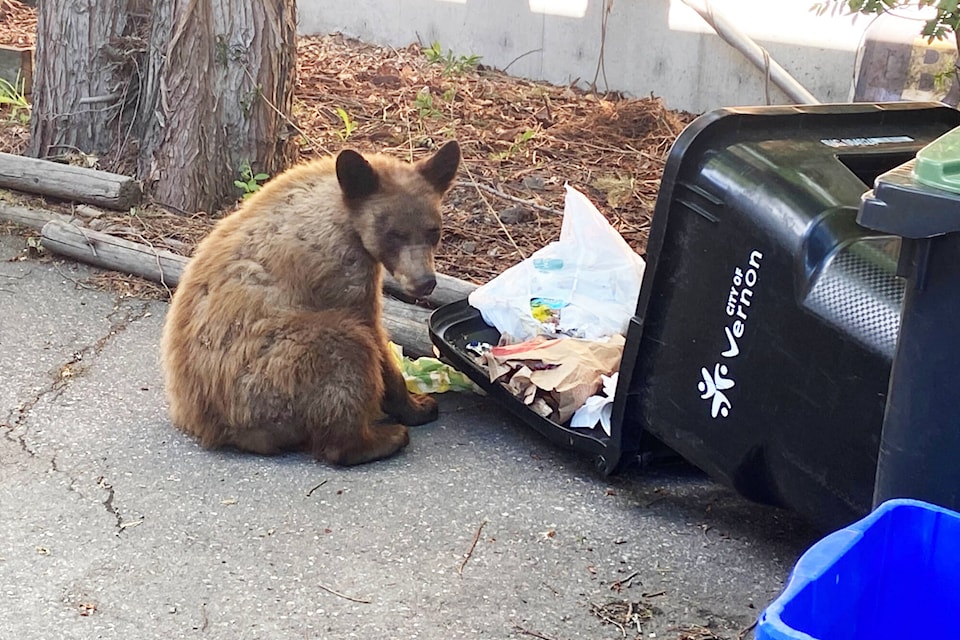As fruit ripens, bears begin to make their appearances in the South Okanagan and Similkameen.
Paige Denton, WildsafeBC coordinator with the Regional District of Okanagan-Similkameen, said there have been several bear sightings in Summerland this summer, as well as some in Penticton, Okanagan Falls and Keremeos.
At present, there is an active bear in the West Bench area outside of Penticton.
The bears can become a problem in a community or a neighbourhood.
“Once a bear has accessed garbage, fruit trees, or bird feeders, it becomes ‘human-habituated,’ which means it loses its fear of people and starts actively seeking out human food sources,” Denton said.
While relocating a bear is possible, it usually does not work, she added.
Bears have their territories, and dropping one bear into another bear’s range often leads to fights or the new bear being pushed out.
The bears can also end up starving or making their way back to the community, even if it is hundreds of kilometres away.
Other bears find a new community and repeat the same behaviour.
As a result, bears that keep coming back to a community are often euthanized, Denton said.
“It’s not a decision made lightly, and it’s not the bear’s fault, it’s a result of human behaviour,” she said. “That’s why it’s so important for communities to manage attractants and prevent these situations from happening in the first place.”
Fruit trees are also attractants for bears.
Denton recommends fruit tree owners keep the ground clear of fallen fruit and, if possible, pick the fruit before it is fully ripe.
Letting the fruit finish ripening inside will limit the sugar-sweet smells that attract bears and other wildlife.
On garbage collection days, she urges people to put out their bins in the morning, not the night before. Following that guideline helps keep wildlife wild and safe, she said.
She urges people to store their garbage securely until collection day. This might mean keeping it in a garage, shed or wildlife-resistant bin.
The Regional District of Okanagan-Similkameen has a bylaw stating that curbside properties within Electoral Areas A, C, D, E, F and I must place garbage in a wildlife-resistant container or a wildlife-proof enclosure, or place it outside after 5 a.m. on the day designated for garbage collection.
Similar bylaws are in place in Summerland and Penticton.
While bears and other wildlife have been close to populated areas, Denton added that pet owners do not need to be worried about the safety of their animals, but they should take precautions.
She recommends keeping pets on a leash during walks and checking the yard before letting pets go off-leash outside, especially around dawn or dusk when wildlife is most active.


